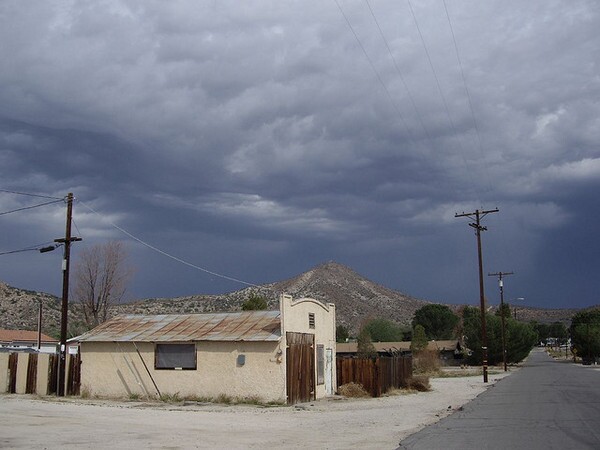BLM Approves San Diego Backcountry Transmission Link

A new substation project is coming to the sleepy San Diego County town of Jacumba | Photo: quegymo/Flickr/Creative Commons License
The Interior Department gave the go-ahead on Tuesday to a section of power line in eastern San Diego County that, though only .8 miles long, is a vital part of a burgeoning and controversial network of renewable energy facilities in the San Diego backcountry, Imperial County, and Northern Mexico.
The decision grants a right of way for a 14-mile 138-kilovolt transmission line, part of the San Diego Gas & Electric (SDG&E) "ECO Substation" project, to cross four-fifths of a mile of BLM-administered public land near Jacumba.
The $435 million ECO Substation project, on the U.S.-Mexican border east of Jacumba, would be connected to SDG&E's existing Boulevard substation by the 14-mile powerline. The two substations would be a crucial part of SDG&E's network, connecting renewable energy generation facilities in the area to the utility's new Sunrise Powerlink transmission line.
The substation project has generated significant local opposition. Neighbors in Jacumba and Boulevard have objected to what they term the increasing industrialization of the rural southeastern corner of San Diego County, and point out that the substation encourages more such development. The substation project was proposed in order to connect pending wind developments -- Tule Wind in the McCain Valley and Energía Sierra Juarez in northern Baja California -- to the Sunrise Powerlink.
Residents gained an important ally in opposing the substation last year, when outgoing Congressional representative Bob Filner wrote the BLM and California Public Utilities Commission to oppose the substation project, along with Tule Wind and Energía Sierra Juarez.
The BLM approved the Tule Wind project in 2011.
ReWire is dedicated to covering renewable energy in California. Keep in touch by liking us on Facebook, and help shape our editorial direction by taking this quick survey here.


